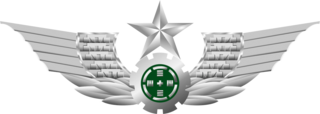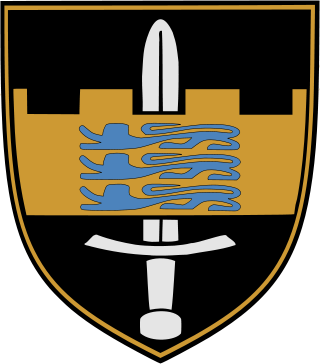
The High Mobility Multipurpose Wheeled Vehicle is a family of light, four-wheel drive, military trucks and utility vehicles produced by AM General. It has largely supplanted the roles previously performed by the original jeep, and others such as the Vietnam War-era M151 jeep, the M561 "Gama Goat", their M718A1 and M792 ambulance versions, the Commercial Utility Cargo Vehicle, and other light trucks. Primarily used by the United States military, it is also used by numerous other countries and organizations and even in civilian adaptations. The Humvee saw widespread use in the Gulf War of 1991, where it navigated the treacherous desert terrain; this usage helped to inspire civilian Hummer versions. The vehicle's original unarmored design was later seen to be inadequate. The vehicle was found to be particularly vulnerable to improvised explosive devices in the Iraq War. The U.S. hastily up-armored select models and replaced front-line units with the MRAP. The U.S. military sought to replace the vehicle in front-line service under the Joint Light Tactical Vehicle (JLTV) program. In 2015 the Oshkosh L-ATV was selected for production.

The Stryker is a family of eight-wheeled armored fighting vehicles derived from the Canadian LAV III. Stryker vehicles are produced by General Dynamics Land Systems-Canada (GDLS-C) for the United States Army in a plant in London, Ontario. It has four-wheel drive (8×4) and can be switched to all-wheel drive (8×8).

The People's Liberation Army Ground Force is the land-based service branch of the People's Liberation Army and the largest and oldest branch of the entire Chinese armed forces. The PLAGF can trace its lineage from 1927 as the Chinese Red Army; however, it was not officially established until 1948.

The Multi-Mission Unmanned Ground Vehicle, previously known as the Multifunction Utility/Logistics and Equipment vehicle (MULE), was an autonomous unmanned ground combat vehicle developed by Lockheed Martin Missiles and Fire Control for the United States Army's Future Combat Systems and BCT Modernization programs. The last component of the program was canceled in July 2011.

The brigade combat team (BCT) is the basic deployable unit of maneuver in the U.S. Army. A brigade combat team consists of one combat arms branch maneuver brigade, and its assigned support and fire units. A brigade is normally commanded by a colonel (O-6) although in some cases a brigadier general (O-7) may assume command. A brigade combat team contains combat support and combat service support units necessary to sustain its operations. BCTs contain organic artillery training and support, received from the parent division artillery (DIVARTY). There are three types of brigade combat teams: infantry, Stryker, and armored.
GM Defense is the military product subsidiary of General Motors headquartered in Concord, North Carolina; focusing on the defense industry needs with hydrogen fuel cell and other advanced mobility technologies. GM Defense projects include SURUS an autonomous modular platform joint project with the United States Army.

The reorganization plan of the United States Army is a current modernization (2017–2028) and reorganization (2006–2016) plan of the United States Army that was implemented (2006–2016) under the direction of Brigade Modernization Command. This effort formally began in 2006 when General Peter Schoomaker, was given the support to move the Army from its Cold War divisional orientation to a full-spectrum capability with fully manned, equipped and trained brigades; this effort was completed by the end of 2016. It has been the most comprehensive reorganization since World War II and included modular combat brigades, support brigades, and command headquarters, as well as rebalancing the active and reserve components. The plan was first proposed by the Army's 34th Chief of Staff, Eric Shinseki, in 1999, but was bitterly opposed internally by the Army.

The Estonian Land Forces, unofficially referred to as the Estonian Army, is the name of the unified ground forces among the Estonian Defense Forces where it has an offensive military formation role. It is currently the largest Estonian military branch with the average size during peacetime of approximately 6,000 soldiers, conscripts, and officers.

The Ground Combat Vehicle (GCV) was a program initiated by the United States Army in 2009, with the goal of developing a next-generation armored fighting vehicle. The first variant of the GCV to be developed would be an infantry fighting vehicle to replace the M2 Bradley.

The M2 Bradley, or Bradley IFV, is an American infantry fighting vehicle that is a member of the Bradley Fighting Vehicle family. It is manufactured by BAE Systems Land & Armaments, which was formerly United Defense.

The Ground Mobility Vehicle (GMV) is a U.S. Special Operations Command, (US)SOCOM program, initially modifying Humvees into several variants for use by the United States special operations forces (SOF).

The Armored Multi-Purpose Vehicle (AMPV) is a U.S. Army program to replace the M113 armored personnel carrier and family of vehicles. AMPV is a sub-project of the Next Generation Combat Vehicle program.
The Flyer Advanced Light Strike Vehicle platform has been developed by General Dynamics Ordnance and Tactical Systems (GD-OTS), in partnership with Flyer Defense LLC, for the U.S. Special Operations Command (SOCOM) Ground Mobility Vehicle Program. The Flyer Advanced Light Strike Vehicle platform configurations are the Flyer 72 and the narrower Flyer 60.
The M1297 Army Ground Mobility Vehicle, previously just GMV, and formerly called the Ultra Light Combat Vehicle (ULCV), is a U.S. Army airdroppable light off-road vehicle for light infantry brigades. The A-GMV is produced by General Dynamics. The design is closely based on the M1288 GMV 1.1, which is itself based on the Flyer 72.

The United States Army Futures Command (AFC) is a United States Army command, designed as a public-private initiative, that runs modernization projects for the Army. It is headquartered in Austin, Texas, and was first commanded by General John Murray, formerly the Army's G-8; the second and current commander was formerly the Army's G-3/5/7.
The Next Generation Combat Vehicle (NGCV) is a United States Army program intended to procure a variety of armored vehicles to add new capabilities to Army units and replace existing platforms that are nearing the end of their service life. The program covers the following systems:
The Optionally Manned Fighting Vehicle (OMFV) is a U.S. Army program to replace the M2 Bradley infantry fighting vehicle. OMFV is one part of the Next Generation Combat Vehicle portfolio of programs.

The Mobile Protected Firepower (MPF) system is a U.S. Army program to procure a combat vehicle that is capable of providing mobile protected direct offensive fire capability. This vehicle is considered a light tank by some sources, but not according to Army officals. The program is part of the Next Generation Combat Vehicle program. A previous light tank development for the Army, the M8 Armored Gun System, was canceled in 1996.

The M1288 GMV 1.1 is a U.S. Special Operations Command light utility vehicle based on the General Dynamics Flyer 72. The GMV 1.1 replaces the Humvee-based Ground Mobility Vehicle (USSOCOM).














